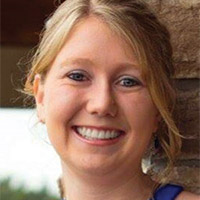Imagine walking into your first class of the fall semester, and your professor explains that you and your classmates will jump right into the work of creating a public-relations (PR) plan for a real nonprofit organization. That’s exactly what happened to David Deemer and Stefani Leeper1 when they walked into Patricia Max-well’s Fall 2015 public-relations principles class.
A new professor at Union College in Lincoln, Nebraska, Maxwell teaches several communication and social-media classes in which she endeavors to teach her students by giving them not just theoretical but also practical knowledge. She has spent many years as a public-relations professional, most recently as director of marketing and communication technologies for Catalina Island Conservancy in Long Beach, California.
Maxwell has worked and volunteered for a number of nonprofit organizations over the years, from Los Angeles, California, U.S.A. to San Martin, Guatemala. “One thing always remains true—nonprofits generally do not have the resources to accomplish all they want and need to do,” Max-well said. “Working with these organizations can be very rewarding.”
In the summer, as she prepared for her classes, she began making connections with nonprofit organizations around Lincoln, including Constru Casa, Lincoln Interfaith Coalition, Lincoln Peacemakers, and Domesti-PUPS, and many were open to allowing students to help them develop a public-relations plan.
Maxwell set high goals and felt confident that her students could achieve them—including adding real value to nonprofits’ communication programs by producing professional-quality work that met a real need. “The students absolutely reached the goals I had envisioned,” Maxwell explained. “The PR principles class this fall gave three Lincoln-based organizations the added boost of talent and time to accomplish some key tasks leading to brand awareness and engagement with their audiences.”
The first year, students were appointed to teams based on their self-identification of skills and interests. The second year, job descriptions were provided, and the team leaders selected those students with the skills and interests they needed for the project. Instructors can monitor this selection process to ensure each student is part of a team.
Taking on the Real World
David Deemer, a senior biomedical science major, teamed up with Roxi Peterson, Michael Brautigan, and Kristi Tucker to work with Constru Casa, a nonprofit that builds homes for impoverished families in Guate-mala. They set out to increase awareness among older audiences who might be interested in supporting their efforts. To build awareness, Deemer and his group submitted an article for publication in Nebraska Magazine (The University of Nebraska’s alumni magazine) featuring CEO Jim Pittenger and University of Nebraska Lincoln graduate student Kye Kurkowski.
Even though this project was given to them the first day of class, Deemer said that the team determined the path of the project, which taught him that life is thrown our way every day, and we can’t always prepare for it. “There’s a lot to be said about learning to make adjustments as you go,” he said. “I think this class taught us to do that and to be comfortable in that environment.”
Projects like these often prove to be very time-consuming. “This class is very involved, and in order to do well, you must invest time and energy into your team and your project,” Deemer said. “Overall, it was a challenging and rewarding experience, and I’m glad I was able to take part in it.”
Stefani Leeper teamed up with Anthony Gann and Rachel Lozano to work with Domesti-PUPS, a nonprofit that organizes community services with service and therapy dogs. This team grew the organization’s Twitter audience and edited a promotional brochure. “I feel my team contributed by helping the owner of Domesti-PUPS realize that the business needs a larger social-media outreach, which can be easily accomplished by simply hiring a business or communications student as an intern,” Leeper explained. Her favorite part of the class included the final presentation, not because it signaled the end of the semester but because the students were to dress professionally and present themselves as business people as they presented the work they had done throughout the semester.
The team met with the organization on a regular basis to discuss expectations and give updates. Regular e-mail communication helped to keep the project on track. They also got to meet some of the puppies training to be service dogs. “This was probably the most fun meeting we had, as we were able to ‘forget’ about our job and focus on the purpose of it, the service dogs,” Leeper explained. “We were able to hold the puppies and pet them. Although the experience lasted for less than 10 minutes, it was a nice, relaxing experience that we enjoyed as a team.”

One of the author’s PR teams worked to promote a local nonprofit organization called Domesti-Pups. The team helped revise a promotional brochure and promoted several awareness and fundraising events for the organization. Left to right: Rachel Lozano, Anthony Gann, and Stephanie Leeper.
Making an Impact
According to Maxwell, each team made a lasting impact on the organization they served. “Every organization reported that the quality of work by Union College students in this class was excellent,” she said.
One of the other class teams worked with the Lincoln Interfaith Peacemaking Coalition. “Our committee would not have been able to reach any of the organizations and younger generations without their Facebook and Website designers,” said Martha Gadberry, the director of the coalition. “The analytics were invaluable. Their need for information forced us to focus on our message and project. They taught us valuable lessons on the use of a variety of technologies in promoting our project.”
Chris Blake, chair of the coalition, agreed. “Partnering with Union College communications students helped the Interfaith Peacemaking Coalition by envisioning, enlightening, and empowering,” he said. “We feel 30 years younger! The media technology accessibility and products they provided were a Godsend. I highly recommend working with Union College emerging media students.”
“The most immediate and obvious effect of the work by the Union College students was to get an article published in the University of Nebraska alumni magazine, which reached a wide audience. We are certainly hopeful that it will generate significant interest in Constru Casa,” said John Lothrop of that organization.
Both students were thankful for the chance to pursue a real public-relations challenge.
“Patience and communication are the keys to life and success in this class,” said Leeper.
“This project may be difficult, but if you persevere, the outcomes are rewarding,” said Deemer. “You get out of this class what you put into it.”

Members of Patricia Maxwell’s Fall 2015 PR class pause for a group photo. Front row, left to right: Roxi Peterson, Michael Brautigan, Professor Maxwell, and David Deemer. Second row, left to right: Kristi Tucker, Rachel Lozano, Helen Maijub, Aria Bodden, and Misha Darcy. Third row, left to right: Stephanie Leeper and Anthony Gann.
Helpful Tips for Teachers
Forming partnerships to enhance student learning takes careful preparation. Here are a few helpful teacher tips provided by Patricia Maxwell:
Teacher Tip 1: Carefully screen the organizations. Some questions to consider:
- Have they worked with and mentored students in this age range before?
- What are the expectations of the organization?
- Do these expectations align with course goals and outcomes?
Teacher Tip 2: Let teams form organically. The first year, students were appointed to teams based on their self-identification of skills and interests. The second year, job descriptions were provided, and the team leaders selected those students with the skills and interests they needed for the project. Instructors can monitor this selection process to ensure each student is part of a team. Also, let students select the organization that they want to work with from a list of possible projects.
Teacher Tip 3: Use frequent evaluations. Self, peer, and supervisor evaluations are essential to the workplace, and learning how to participate in this process is a work-related skill. One common approach is the 360 evaluation process.2 Students evaluate their teammates at three different times during the semester, receive evaluation feedback from the nonprofit partners, and also complete self-evaluations. Encourage students to talk about performance-related issues with one another in a productive and positive manner. The experience builds communication skills they need to work in teams on the job.
Teacher Tip 4: Request feedback from organizations. Ask for feedback from participating organizations at least twice during the semester. Work with partnering organizations to create feedback forms that will meet the needs of both entities—the class and the organization. At the completion of the project, invite the partnering organizations to provide students with a formal endorsement of the work completed.
Teacher Tip 5: Grades reflect performance, just like in a job. Each individual’s grade is made up by the evaluations provided by peers who worked on the project plus the total grade assigned to the team by the class, organization, and teacher, then divided by 2. This keeps the grade “fair” for those who are carrying the bulk of the teamwork and encourages all of the team members to contribute to the work equally.
Teacher Tip 6: Network constantly. This might be easier said than done, depending on your personality, but use every opportunity to meet leaders of businesses and nonprofits, as well as city administrators to tell them about your program and to ask them whether they’d like to participate. For example, one organization created an internship after I (PJM) talked about the talents and skills my students could bring to their mission.
Teacher Tip 7: Let it be. It’s hard sometimes, but let the teams do the work and experience the result of that work, be it “good” or “bad.” Guide and encourage, but let this be their project. Remember Psalm 32:8: “I will instruct you and teach you in the way you should go; I will counsel you with my loving eye on you” (NIV).3
Recommended citation:
Megan Wehling and Patricia J. Maxwell, “Best Practices at Work,” Journal of Adventist Education 79:2 (January – March, 2017). Available at https://www.journalofadventisteducation.org/en/2017.2.8.
Notes and References
- Names used with permission.
- Instructors, students, and partners can use the information provided by 360 evaluations to gauge how well the project is progressing and what changes might need to be made. See Harriet Edleson, “Do 360 Evaluations Work?” Monitor on Psychology 43:10 (November 2012): 58: https://www.apa.org/--- monitor/2012/11/360-evaluations.aspx.
- Holy Bible, New International Version®, NIV® Copyright © 1973, 1978, 1984, 2011 by Biblica, Inc.® Used by permission. All rights reserved worldwide.





